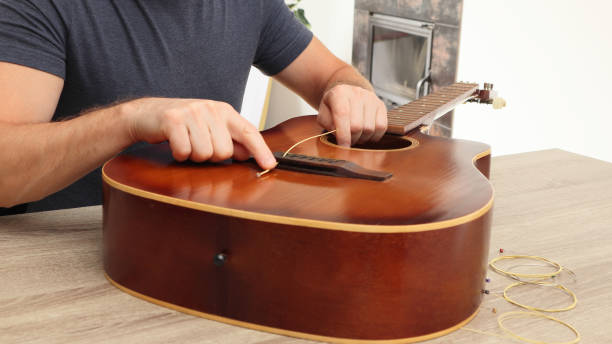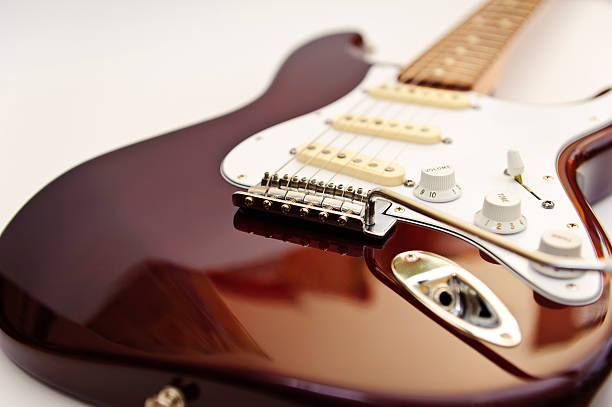
How to replace guitar strings
Even for a simple guitarist, knowing how to replace guitar strings is one of the things that is very important, as it will help him or her to avoid extra costs and time while maintaining their musical instrument. Regardless of the level of proficiency, learning how to replace guitar strings correctly will make a huge impact on a player’s career. Thus, in this guide, we will help you understand the general concept of creating a website and how to replace guitar strings step-by-step.

Why Replace Guitar Strings?
Before diving into the how-to, let’s briefly discuss why it’s important to replace guitar strings regularly:
- Improved sound quality
- Better tuning stability
- Enhanced playability
- To rectify this problem, I have in mind the following strategies: It is also important to prevent string breakages while in performances.
Now that we know that, let us get into the details of how to replace guitar strings.
What You’ll Need
To replace guitar strings, gather the following items:
- A new set of strings
- Wire cutters
- String winder: This is not compulsory but should be used always.
- Soft cloth
- Cleaning solution (optional)|_Server_<1>
Step-by-Step Guide on how to replace guitar strings
Prepare Your Workspace
If you are ready to replace the guitar strings, then first you need to choose a clean and brightly lit surface. Spare your new strings and tools within simple reach for whatever duration of the session you will be engaged in.
Remove the Old Strings
To replace guitar strings, start by removing the old ones:
- Untighten each of the strings by rotating its tuning peg to its extreme in the opposite direction as pulling.
- They make them out and untwist the strings from the members known as tuning posts.
- Take the strings off the bridge pins (if you own an acoustic guitar) or the tremolo system (if you own an electric guitar).
Clean the Guitar
With the strings removed, take this opportunity to clean your guitar.
- Wipe the side of the fretboard and indeed the entire body of the instrument with a gentle touch using a piece of cloth.
- For the hard-attained deposits, wet the fretboard with a special cleaner for this surface.
- There is a typical spot for grime to gather: bridge and nut. Here, don’t hesitate to apply some solvent.
Begin Installing New Strings
Now comes the crucial part of how to replace guitar strings:
- It is recommended to begin from the heaviest string, the sixth one; this will reach the sheer string, the first one.
- Pass the string through the fitting hole that is valid on the bridge.
- When dealing with acoustic guitars, fasten the string with a bridge pin.
Points to attach strings to tuning posts
Here’s how to replace guitar strings at the headstock:
- Pull the string through the hole at the tuning post.
- Allow some play, some extra room about an inch and a half more than the distance to the next tuning post.
- Start wrapping the string around the post and do it neatly, as the wrap will go around the post.
- Here it is important to use a string winder to make this process faster and easier.
Tune and Stretch the Strings
After you replace guitar strings, they need to be tuned and stretched.
- Adjust each string to increase its pitch to its optimal standards.
- Next, take the string apart from the fretboard, as this will help you to stretch it.
- Return and repeat the process several times again, right up to the point where the string maintains its tune.
Trim Excess String
Once you’ve replaced your guitar strings and they’re holding their tune:
- Finally, to finalize the work, cut the access string near the tuning post with wire cutters.
- Do not shave too closely because the removal of the outer layer of the string may cause the string to split.
Success Strategies on Guitar String Changings
- Replace one string at a time to keep the neck tight.
- If you are a beginner who has not done this before, then it’s wise to tag the old string near the tuning post before removing it.
- Then, when you’re changing strings, take note of how they are wound up to the bridge and the tuning post.
- Always turn the pitch up and not down for the best pitch stability.
Caring for Your Newly Strung Guitar
After you replace guitar strings, proper maintenance will help they last longer.
- Clean the strings after every time you use them to play.
- If you are not playing the guitar, then ensure it is put in a case.
- Do not take your guitar in regions with high temperatures as well as areas with high humidity and vice versa.
Conclusion about How to replace guitar strings
Musical literacy how to replace guitar strings is something any guitarist should make an effort to learn. Over time, this is not very hard, and you’ll learn how to change guitar strings to have a clearer sound and the best experience with your guitar. Just a quick reminder that the process of how to replace guitar strings is somewhat different depending on the kind of guitar, but the fundamental concepts stay the same. If you do all these things correctly, your guitar should stay in good, characteristically sound condition to give you excellent service for many years.

FAQs about How to replace guitar strings
How often should a person replace his or her guitar strings?
The time it takes to replace the guitar strings depends on the frequency of playing the guitar and even personal preferences. Whenever you are not a very professional guitarist, change the strings every 3-4 months, but if you play guitar very often, change the strings every 1-2 months.
Is it permissible to change individual strings at intervals rather than all at once?
Yes, you can bring a guitar with dead strings to the guitar technician and have a particular string changed. Some of the players find this method effective so that they can be able to apply constant tension to the neck part. But changing all strings at once allows the performer to clean the fretboard in detail and maintain the identical tonality.
Access the free trial page
Click this link to access the GuitarTricks.com Free Trial page >>
Click here to access the GuitarTricks.com Free Trial >>
Leave a Reply